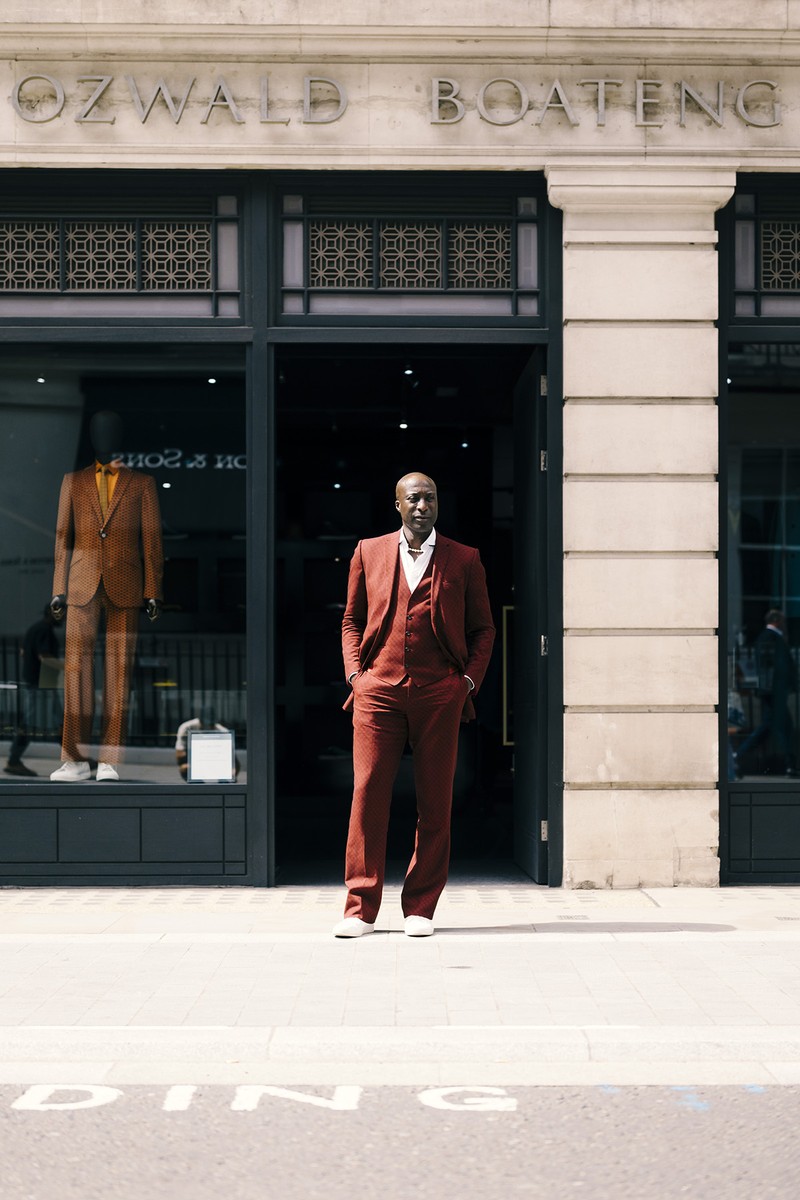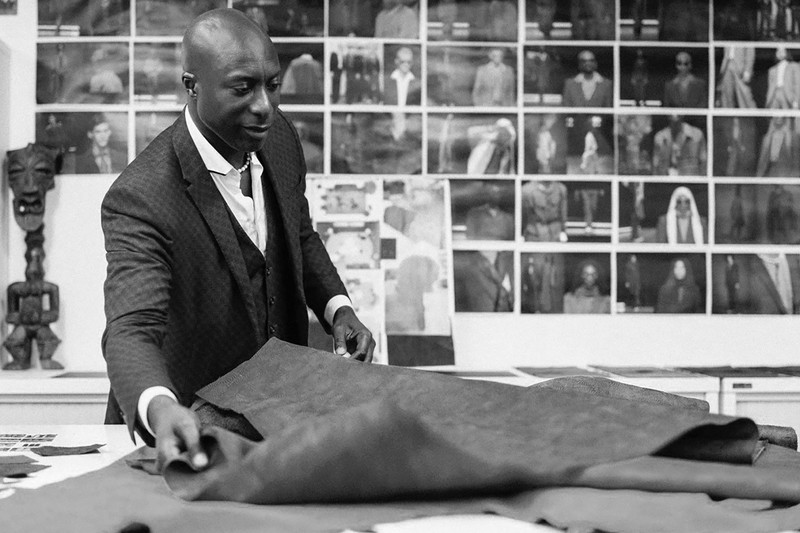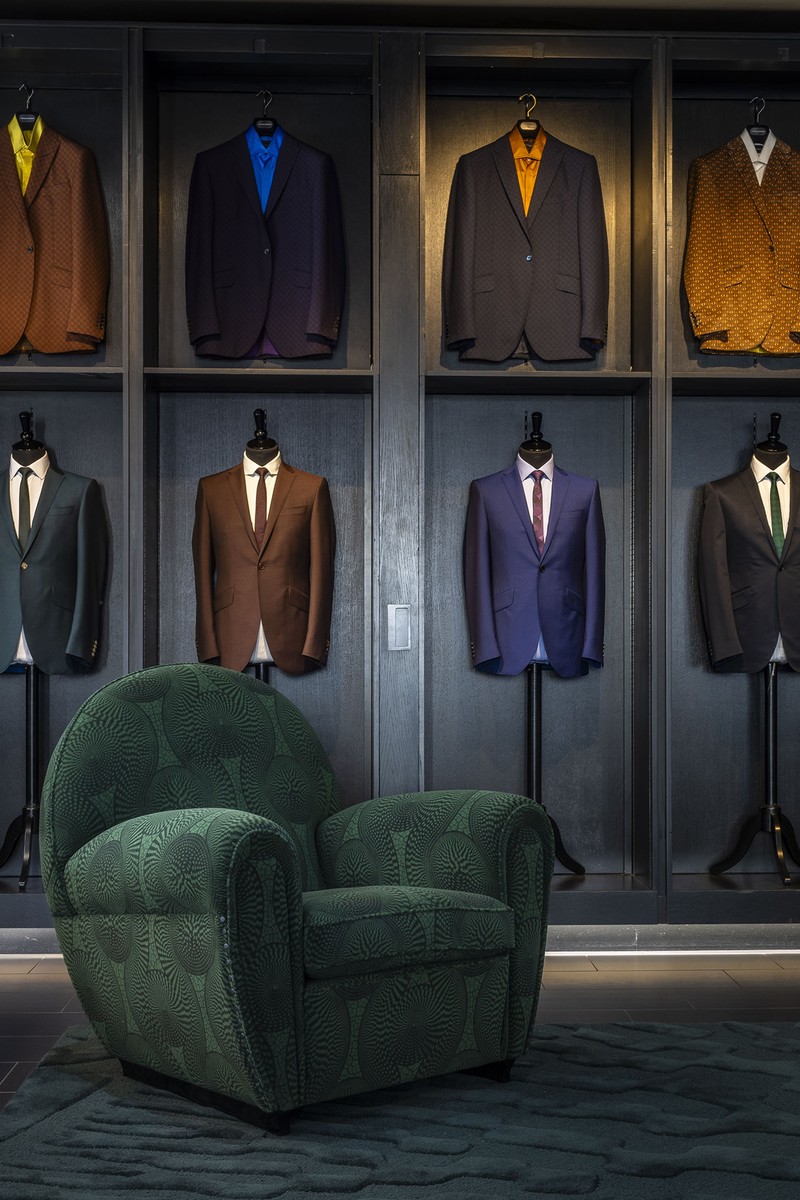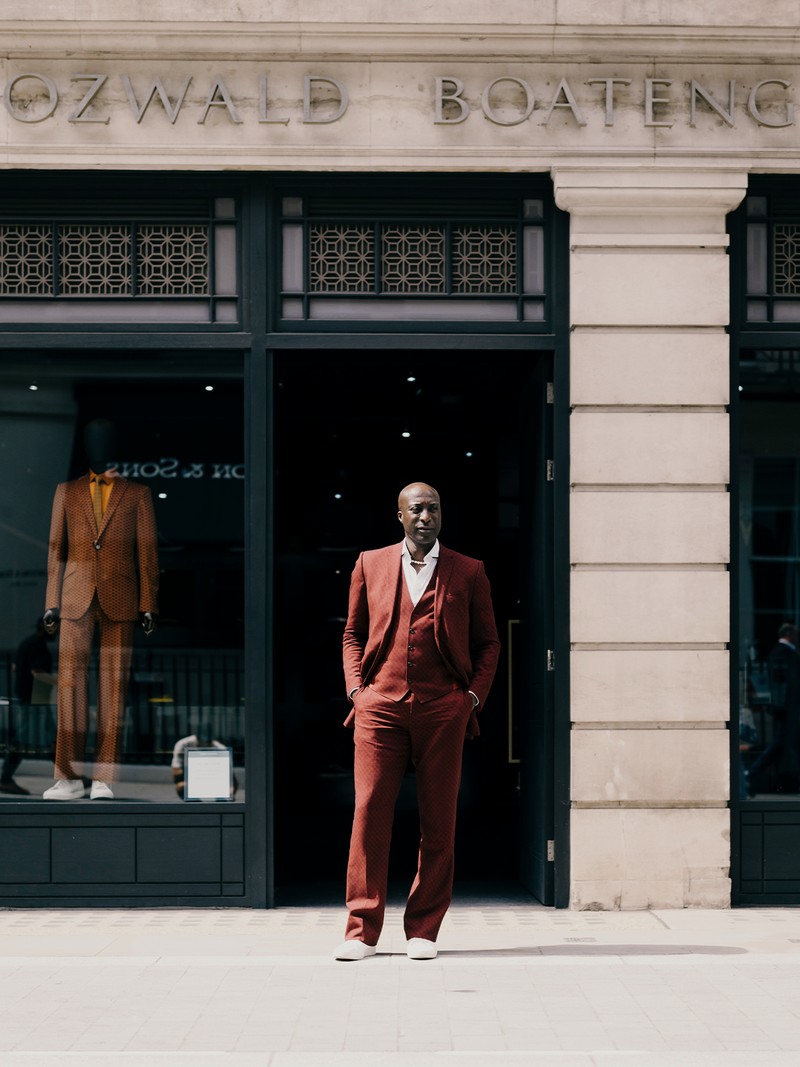SLMan Meets… Ozwald Boateng

When I started making clothes nearly 40 years ago, my aim was to modernise the concept of tailoring. I fell in love with designing clothes, and always knew I wanted to have my own store on Savile Row. The street is the best of the best, and it represents a lot in British culture, not just within the fashion industry. I wanted to redefine what Savile Row represented and challenge people’s perceptions on what ‘British’ meant.
I fell into designing clothes. I was studying computer programming in the late 80s when my girlfriend asked me to help her with a fashion show she was working on. That was the turning point. I was inspired to create my own designs, so I got to work on my mother’s sewing machine. That led to my first collection, which led to my first customers. After I discovered this passion, I knew I had to work hard if I wanted to create a viable business.
Culturally, it was a different world back then. Eighties London was another landscape in every sense. Was it important for me to bring my Ghanaian heritage into my work in the early days? No. Because you didn’t showcase your cultural roots in your work back then. My aim was to modernise traditional tailoring and create something totally new, which I did with colour. Only when I was more established did I take the plunge with colours that reflect my African heritage.
It doesn’t get more traditional than men’s tailoring, so I had to put in the graft to be accepted in the industry. I had to create my own space – literally and culturally. In ’94 I was the first tailor to have a catwalk show at Paris fashion week. Knowing what that meant, I made sure it was a multicultural event, casting models from all over the world. I wanted to embrace every culture and send that message to the rest of the world.

There were huge challenges during that time, but I didn’t bow to them. I went to school in the 70s, when it was a difficult time to be a Black person. It was the time of the infamous ‘sus law’, when Black kids were getting stopped and searched at will. If that’s your everyday, you become accustomed to things like prejudice. Walking down the street as a Black person was challenging, so wearing a sharp suit was a way of protecting yourself. That’s one of the reasons I was drawn to tailoring – it symbolised a level of respectability.
There were only a few Black designers in Britain at the start of my career – people like the great Joe Casely-Hayford. For a long time, I was used to being the only Black man in the room. Sometimes there were two of us, maximum three. The benchmarks for success back then were Muhammad Ali, Michael Jackson and Mandela, who was in prison at the time. They were the three global figureheads, though there were also people like Lenny Henry in the UK. Thankfully, times have changed and the industry is more diverse. And it’s not just designers, it’s also stylists, fashion editors and make-up artists. It’s fantastic to see such change and the balance start to shift, but I want to see more. And I want to see more success.
Right now, tailoring is coming back. The suit is having a moment. A few years ago, a three-piece suit was not fashionable, but it’s finding itself again. The kind of tailoring I was working on 30 years ago is coming back; lines are sharper and stronger, having been softer and more casual. In the future, I think we’ll continue to wear defined shapes that showcase skill and craftmanship.
To keep my designs fresh each season, I have an amazing textile archive that I reference. I’m also constantly developing my own textiles, which is another source of inspiration. I always design with purpose – everything I do has a ‘why’. That helps with creativity.
Dressing Jamie Foxx is always fun. I styled him at the 2005 Oscars when he won Best Actor for Ray. I was introduced to him by Will Smith a few years prior, and I was astounded by the impact of his performance on Hollywood at that time. That was a career highlight – in fact, it was magic. I designed some of the suits in Jamie’s new film, The Burial, so I’m excited to see his performance on the big screen.
/https%3A%2F%2Fslman.com%2Fsites%2Fslman%2Ffiles%2Farticles%2F2023%2F10%2Fconcours.jpeg?itok=JaT8HIQN)
You won’t be surprised to hear that I wear a lot of suits. Day to day, I like to keep it simple and classic. Today, people appreciate that you can wear a suit every day, not just on special occasions. Menswear isn’t as defined as it was a few years ago. You can mix and match smart with casual, masculine with feminine. The lines are more blurred and style is an open book.
My advice for men looking to add more colour into their wardrobe is to choose the right shade. It’s not so much about the colour itself. For example, there are 1,000 ways to wear red – with notes of black, blue and purple. It’s about the richness and depth. The more jewel like the tone, the more wearable it is. It’s something I’ve always woven into my work.
Style isn’t just about the clothes you wear. It’s how you carry and present yourself to the world. From fashion to interiors, there’s an art to curating style and colour. That’s one of the reasons I’ve always wanted to design a collection of furniture. Designing a range with Italian brand Poltrona Frau was an easy decision as we have a shared vision of quality and craftsmanship. I also wanted to translate my aesthetic into their iconic pieces, like the chesterfield sofa. The interiors in my own home are similar as I’m drawn to colour and look for pieces that put a modern spin on something that’s otherwise traditional.
I’d like to leave behind a legacy that inspires others. I also want to continue to create clothes that amplify the wearer – whether that’s making them feel more comfortable about who they are or helping them find their perfect suit.
Check out Ozwald’s collaboration with Poltrona Frau here.

DISCLAIMER: We endeavour to always credit the correct original source of every image we use. If you think a credit may be incorrect, please contact us at [email protected].


